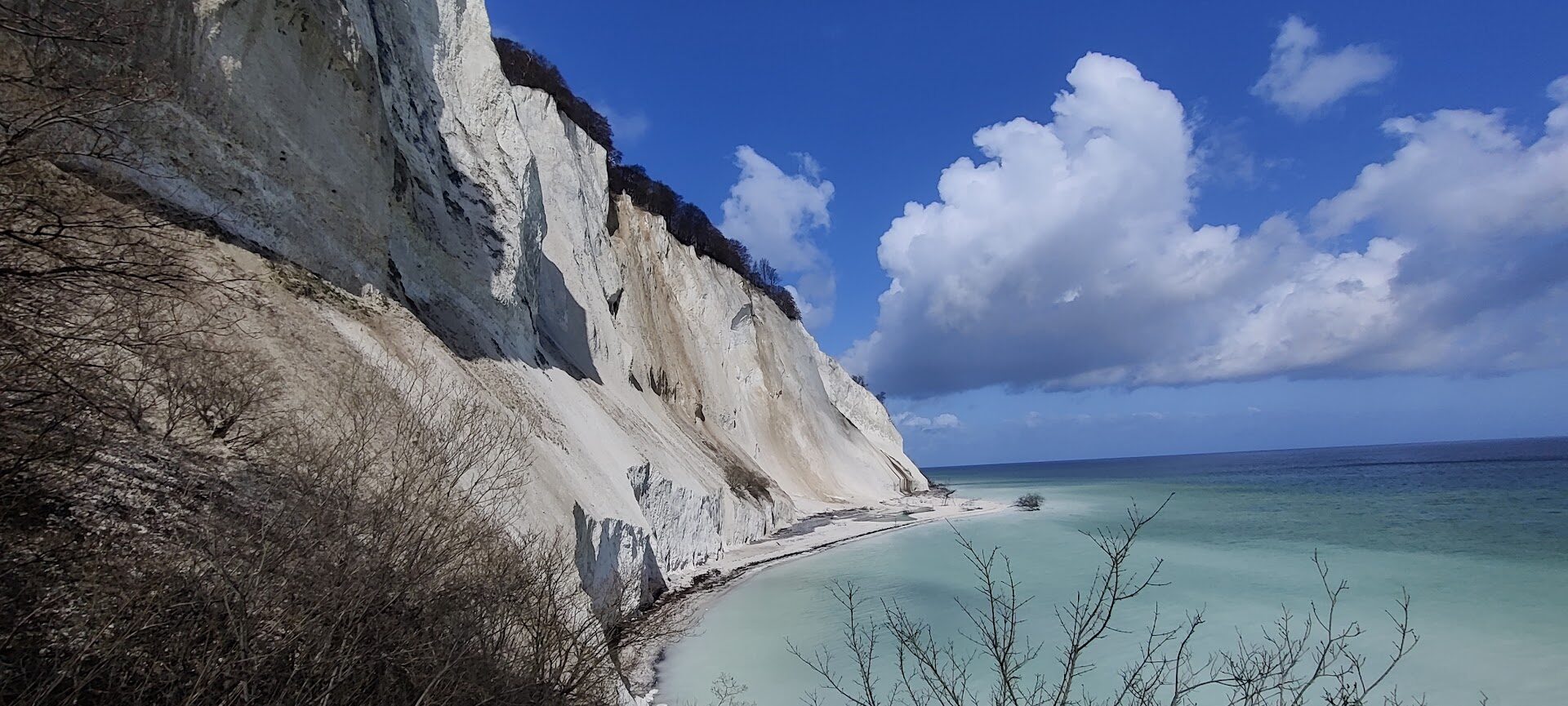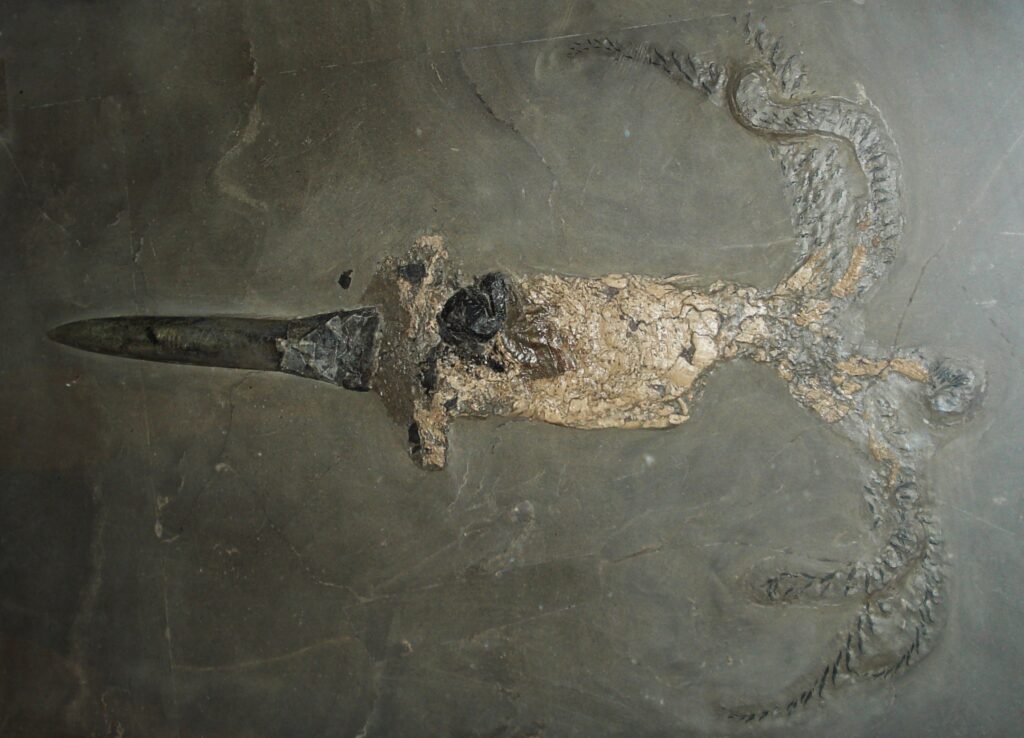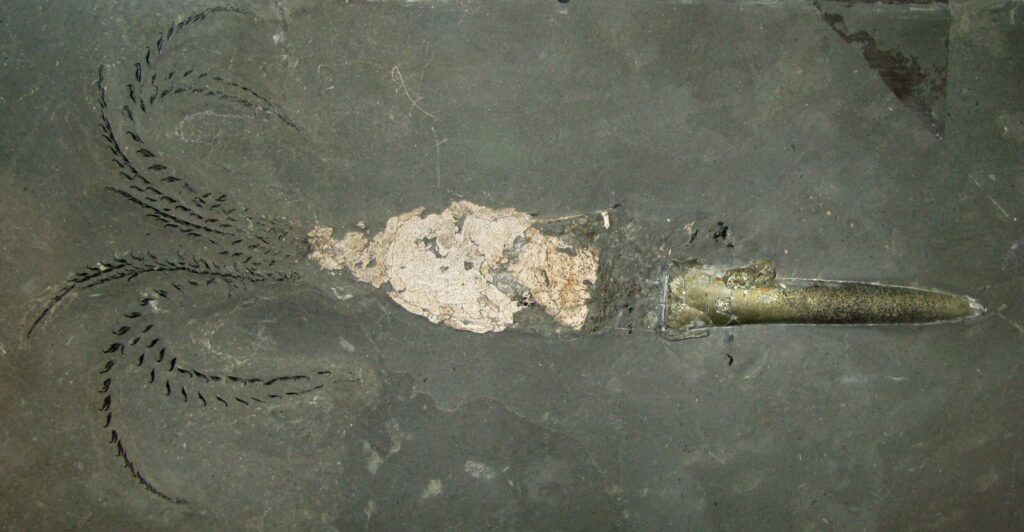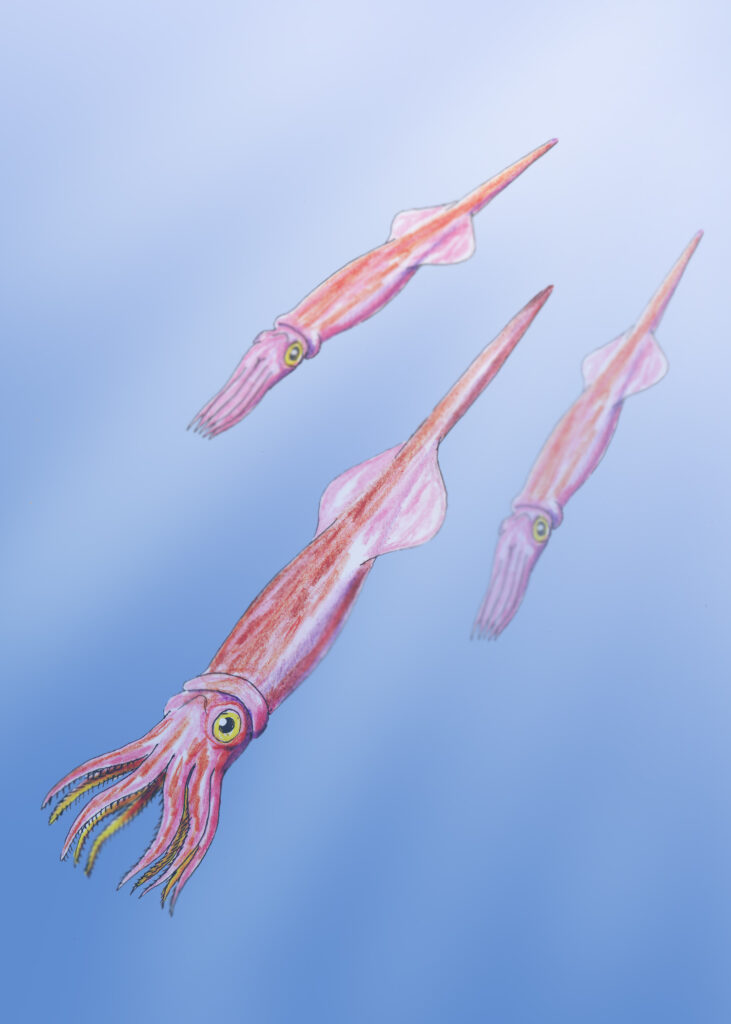I kridthavet levede milliarder af mikroskopiske alger kaldet kokkolithoforider.
De dannede små runde kalkplader, som de pakkede sig ind i, lidt som at forestille sig
en fodbold, man pakker ind i tallerkner, bare i mikroskopisk størrelse.
De enkelte kalkplader kaldes kokkolitter, og når algerne døde, sank kalkpladerne langsomt ned til havbunden.
Gennem de millioner af år, kridthavet eksisterede, blev der langsomt opbygget flere hundrede meter tykke lag af kridtslam på havbunden. Med tiden hærdnede dette til den bjergart, vi i dag kalder skrivekridt, og som har givet navn til hele den geologiske tidsperiode Kridttiden.
Skrivekridtet kan vi i dag se flere steder i Nordeuropa, blandt andet ved de enorme hvide klipper i Dover i det sydlige England, ved de spektakulære kystklinter på den nordtyske ø Rügen, og i flere kridtbrud i det sydlige Sverige, Holland og Belgien.
I Danmark kan skrivekridtet bedst ses ved de flotte kystklinter på Stevns og Møn i det østlige Danmark, men det kan også opleves ved flere mindre lokaliteter i det nordlige Nordjylland, dog mest i kridtbrud.




